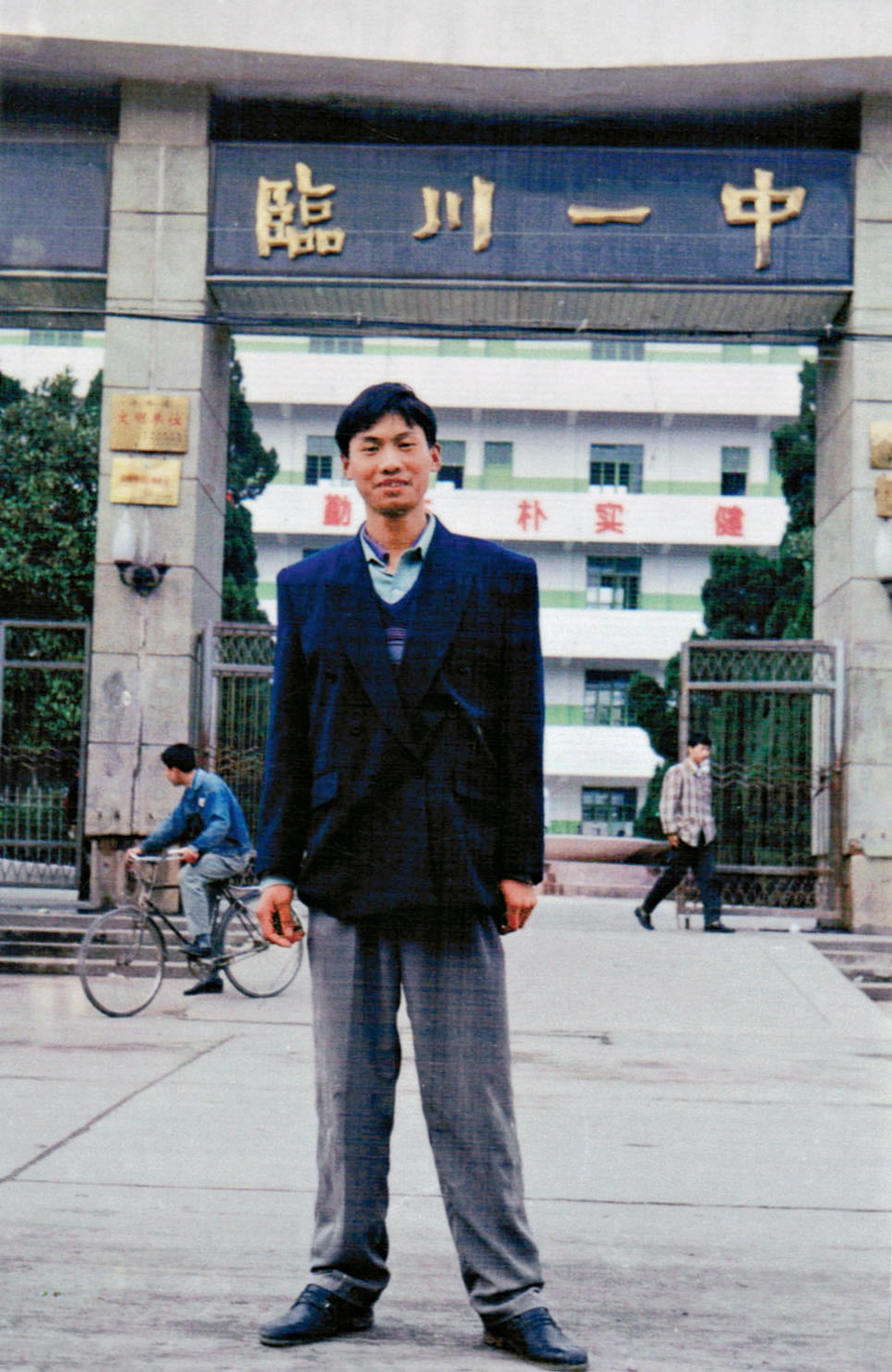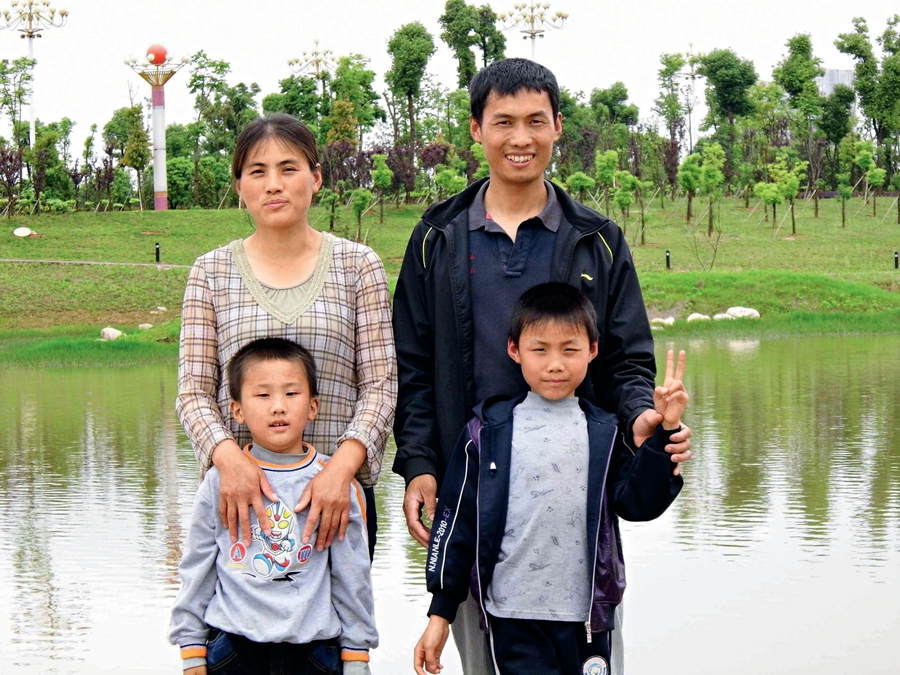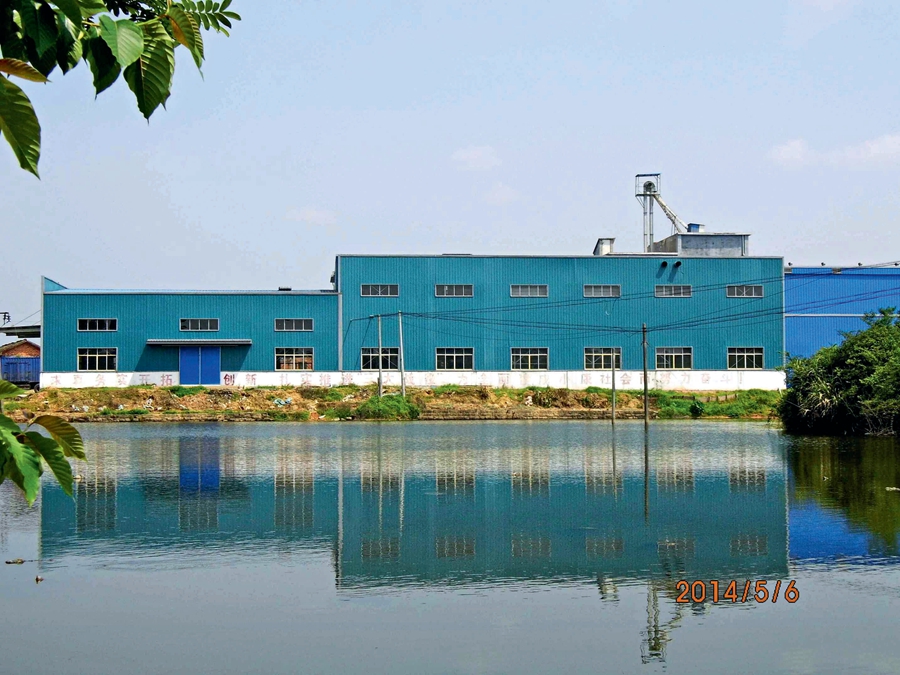By HUANG FARONG
I was born in a rural community in Linchuan, eastern Jiangxi Province, in 1978, the year when China’s reform and opening-up kicked in.
Realizing Self-Sufficiency
It is from village elders’ that I learned about the destitution in my area prior to the reform and opening-up period. By the time I could walk, life in my family had been steadily improving. My dad built a kitchen next to the house in which my family had lived for generations, so my mom didn’t have to cook in the open air any longer. My dad, a mason, was away from home building houses for most of the year except during the busiest farming periods and rainy days. As such, the majority of farm work fell on the shoulders of my mom.
Huang Farong headed for Shenzhen for job opportunities after graduating from Linchuan No.1 Middle School in 1998.
When I turned six, my mom asked my dad to build a pigpen to raise a white-and-black sow. After feeding it in the morning, she set it free into the woods near our home, where it would forage until returning home in the evening. The pig gave birth once or twice a year. To feed the piglets, my mother grew soybeans around the perimeter of our paddy fields. When the piglets were 20 days old, she would wean them off milk, and feed them with porridge made of rice and soybeans. The porridge smelled so good that I would stealthily have a few scoops from time to time. The piglets were ready for sale when they weighed 20 to 30 kg, when the price was the best.
The same year my parents bought a buffalo for plowing, a big asset for farmers at the time. After coming home from work, my father would caress its belly to see if it had eaten its fill. Many of my neighbors could not afford a buffalo, and some families co-kept one to save on the cost. It was my job to graze the cattle. Soon I took over the chores of cooking and preparing pig feed, which I did before leaving for school in the morning.
The farming season in Qingjiang County (now Zhangshu City), Jiangxi Province, in 1987.
My parents saved for many years before they built a new house. Still the money fell short. But my dad knew suppliers who sold him bricks, tiles, and logs on credit for part of the amount. He quarried and cut the stones himself to reduce some costs. The house was the first brick-and-tile building in my village.
The year I entered third grade, my family dug a methane gas pit, and built an outhouse over it. Mulching had been widely adopted, and dad and other villagers had learned to apply chemical fertilizers and pesticides. The application, however, was limited because of the higher prices. Pest control primarily relied on biological measures, and there were no big outbreaks of crop diseases and insects back then.
Every five years the village farmlands were divided and contracted to its member households according to their sizes. During the first round, my five-member family received 15 mu (one hectare), three mu for each member. The allocation has been shrinking since, to the current rate of two mu per head.
When we had 15 mu of land, we could harvest 10,000 kg grains every year, of which half or more were turned over to the government in tax. The rest was enough to feed the family and the animals we raised – cattle, pigs, chickens, and ducks. We had finally become self-sufficient.
Greater Wealth
The market economy flourished in the early 1990s. At a friend’s invitation, my dad ventured to sell chemical fertilizers. At the time, the business was monopolized by state-owned suppliers, including supply and marketing cooperatives and production materials corporations. The profit was high. Dad bought fertilizers from production materials corporations, and resold them to cash-trapped farmers on credit. After grains were harvested, these farmers paid back their debts using rice, usually at a price lower than what they owed, which dad would sell to public or private rice plants. He earned in both deals.
Huang Farong and his family in a Fuzhou park in 2012.
In the mid-1990s, my family rebuilt our home into a brick-and-concrete structure, which had begun to supersede stone-and-wood houses in my region. As demands for building stones dwindled, my father left the mason trade and focused on his retail business. My mother tended the fields, my younger brother and I also helped after school. During summer and winter breaks we would join my father, traveling from one village to another, marketing chemical fertilizers and keeping track of all the sales.
It was onerous to collect arrears for his fertilizer trade, so my dad left the business and partnered with some friends to open a small grain milling factory. They processed rice and sold it to Guangdong Province.
The coastal regions, including Guangdong, were on the forefront of China’s reform and opening-up. Factories blossomed there, and the demand for workers spiked, enticing hordes of rural youths from across the country. I joined them in 1999 after failing to enter college, hoping to learn about management that would help me start a business of my own one day.
I started as a worker on an assembly line of a Shenzhen factory, earning more than RMB 200 per month. On the strength of my technical expertise I picked up through self-education in my spare time, one year later I transitioned to a technician position in a Hong Kong-invested company, which paid me RMB 500-600 a month.
Returning Home
In 2001, China changed its state monopoly policy on grain trade, allowing private businesses to take part for the first time. My father called, soliciting my opinion of a friend’s invitation to open a bigger rice milling factory. With my support, he invested in the factory. In June that year, I quit my job in Shenzhen and returned to my hometown to start a business selling watermelon and rice. That winter, I married a rural girl whom I had met through a matchmaker.
The new plant of Jiangxi Fuzhou Yongxing Rice Co., Ltd. is put into use in 2013.
By this time, the countryside had become much different from years ago. All counties, towns, and townships in my region were accessible on paved roads. The sectors of grain, chemical fertilizers and pesticides were open to private businesses and self-employed traders. Many rural families had built homes of two or three stories, with natural gas stove in the kitchen, and purchased color TV sets and motorcycles. Upon finishing junior or senior middle schools, teenagers would learn a trade or look for factory jobs. Few idled around.
The state scrapped agricultural taxes in 2003. Since then, we’ve only been required to pay for water and public welfare fees. The next year, my family, for the first time, received a state subsidy for grain growers. The sum was based on the size of the land contracted to us, and directly transferred to my bank account. My family was thrilled.
Due to a slump in the rice business starting in early 2005, the rice mill my father co-founded faced a number of challenges. His partners proposed a shutdown, or they would withdraw. Betting on a market recovery in the long run, I borrowed money to buy their shares. I also bought a large amount of a low-priced rice species that was rejected by local mills, and processed it into a product of softer texture that appealed to eastern Guangdong people. My clientele expanded, and profits exploded.
In 2006, I bought new machines and redesigned the processing procedure, which immediately boosted production and sales. My investment was recovered in less than two years. As my business grew, I felt the increasing need to improve my management capacity, and hence regularly attended training courses of corporate management.
The market was unpredictable. A financial crisis jolted the world in 2008, wiping out factories in the coastal region in large numbers and tossing millions of workers into unemployment. The sales of my rice factory took a nosedive. The machines that formerly churned day and night to meet the never-ending orders were at a standstill for weeks. I had stocked high-priced grains that filled my warehouse to the ceiling, but sales were stagnant even at discounts, leaving me to struggle with paying overheads and bank loan interests. Under the crushing financial pressure, many in the rice industry bowed out.
I, however, decided to hold on, knowing that I would do no better in other sectors and believing that I would have fewer rivals after surviving this market freeze. While maintaining ties with old customers in the coastal regions, I began to shift my business to the local market, and meanwhile explored the market in inland provinces like Sichuan. This tactic worked. Sales picked up modestly to keep the factory in operation.
Establishing Farmers’ Cooperative
In 2008, I established a farmers’ cooperative, and encouraged my brother to start a farm. The two projects covered the entire chain of grain production, processing, and sales. Three years later, paved roads extended to my village, which was in a remote location. Perceiving business opportunities brought by improved transport, I sub-leased all the farms in my village to grow rice and tobacco in rotations. Meanwhile, I secured a cigarette producer’s investment in a tobacco curing facility in my village. These operations created jobs and boosted appreciation of land value.
The next year, the handsome revenues from my tobacco plantation brought me to the attention of the township government. With its help, my village applied for government funds to upgrade agricultural operations, and was finally approved. The program led to significant improvements in local irrigation and transport systems.
To cope with expanding business and the changing times, I established contact with agricultural experts across the nation, and dabbled in various fields of study. I received my nutritionist license, and developed a line of health foods made from assorted grains. With my accrued knowledge, I regularly provided free consultation to local farmers.
In 2015, I was enrolled in an undergraduate program of radio-television education, through which I learned more about rural entrepreneurs. The next year I clinched deals with three companies to supply them with pollution-free rice from close to 700 hectares of fields. I also introduced the practice of raising ducks and fish in the fields of red and black rice to local farmers.
In 2017, the Academy of State Administration of Grain bought brown rice from me for research, recognizing its superior quality, and invited me to participate in one of its programs. At the end of the year, my factory and another company in the province established a joint venture to develop high-nutrition fast foods made of brown rice. To further improve the quality of brown rice, I founded a sci & tech association for rice plantation in my area.
With all these endeavors, I hope I can help more farmers around me to embark on the path to greater prosperity.
HUANG FARONG is president of Jiangxi Fuzhou Yong-xing Rice Co., Ltd.



